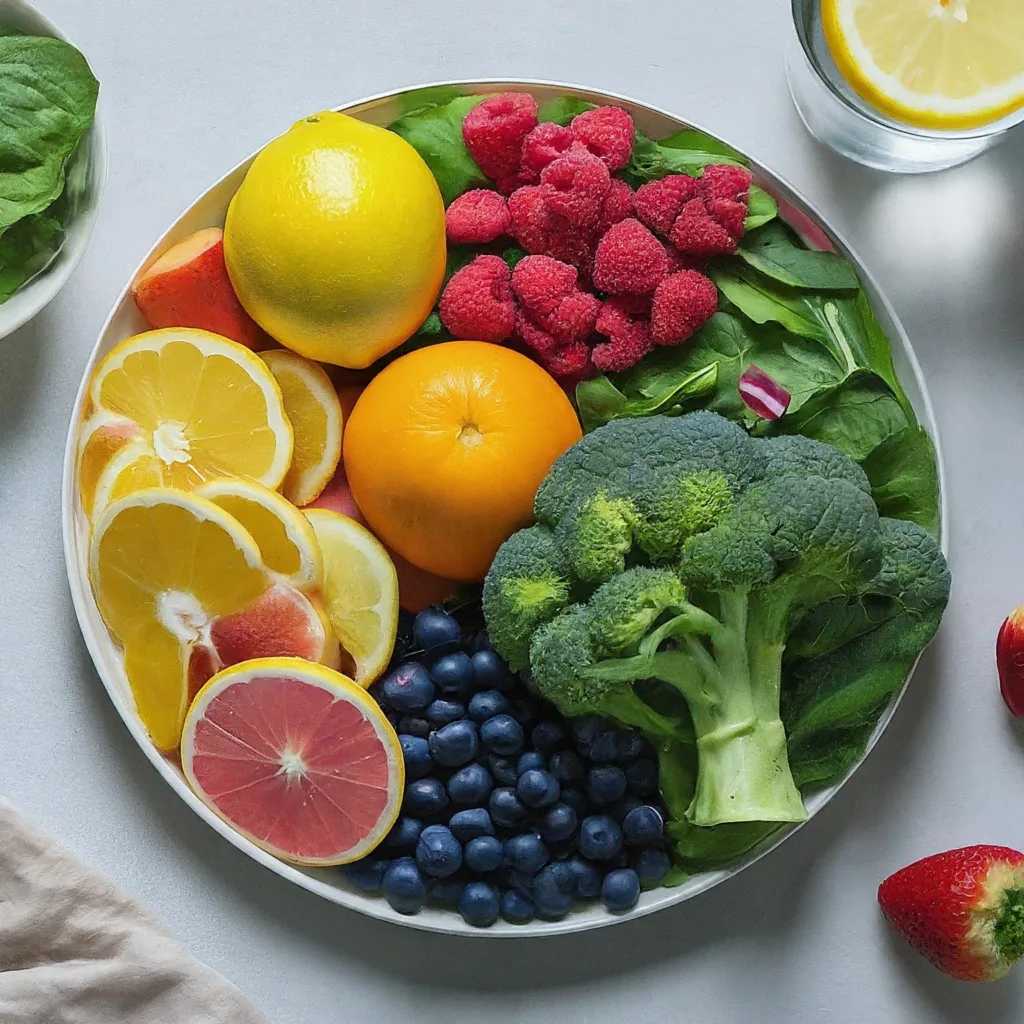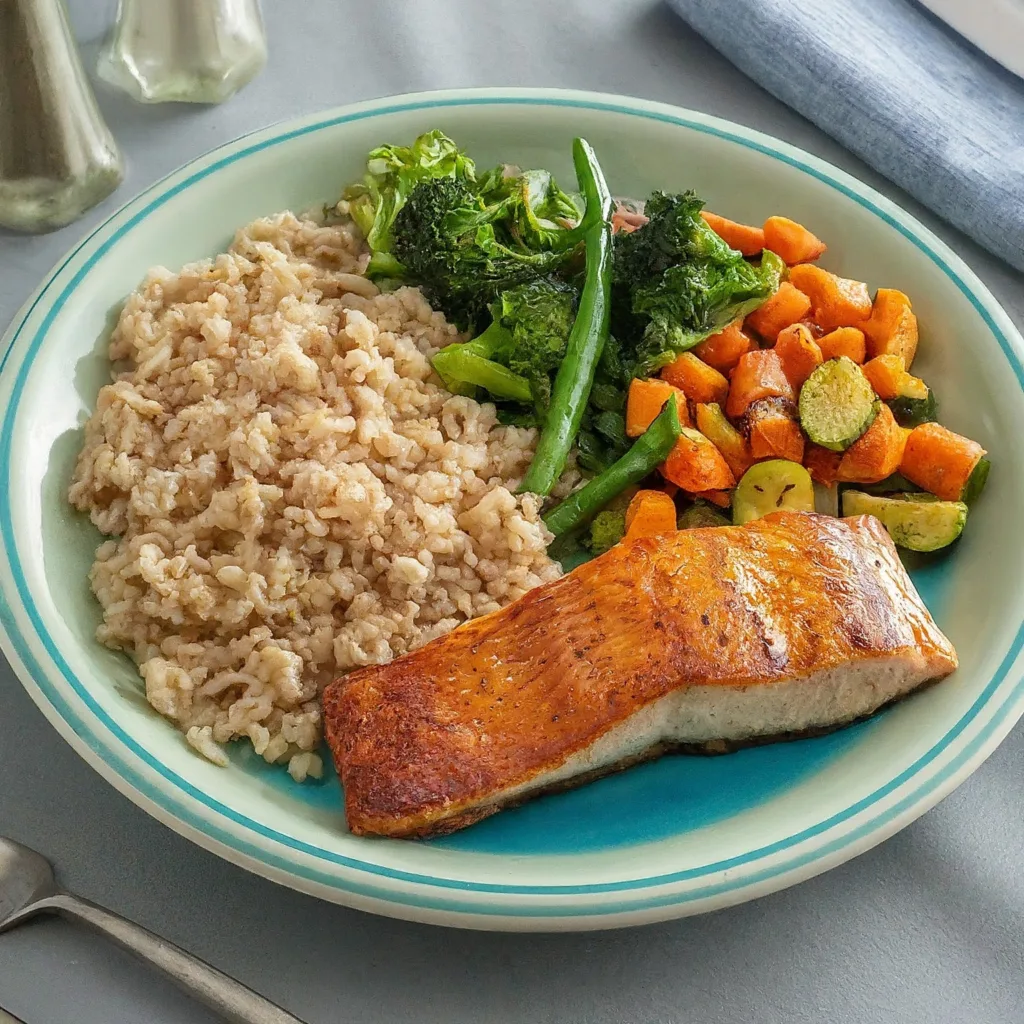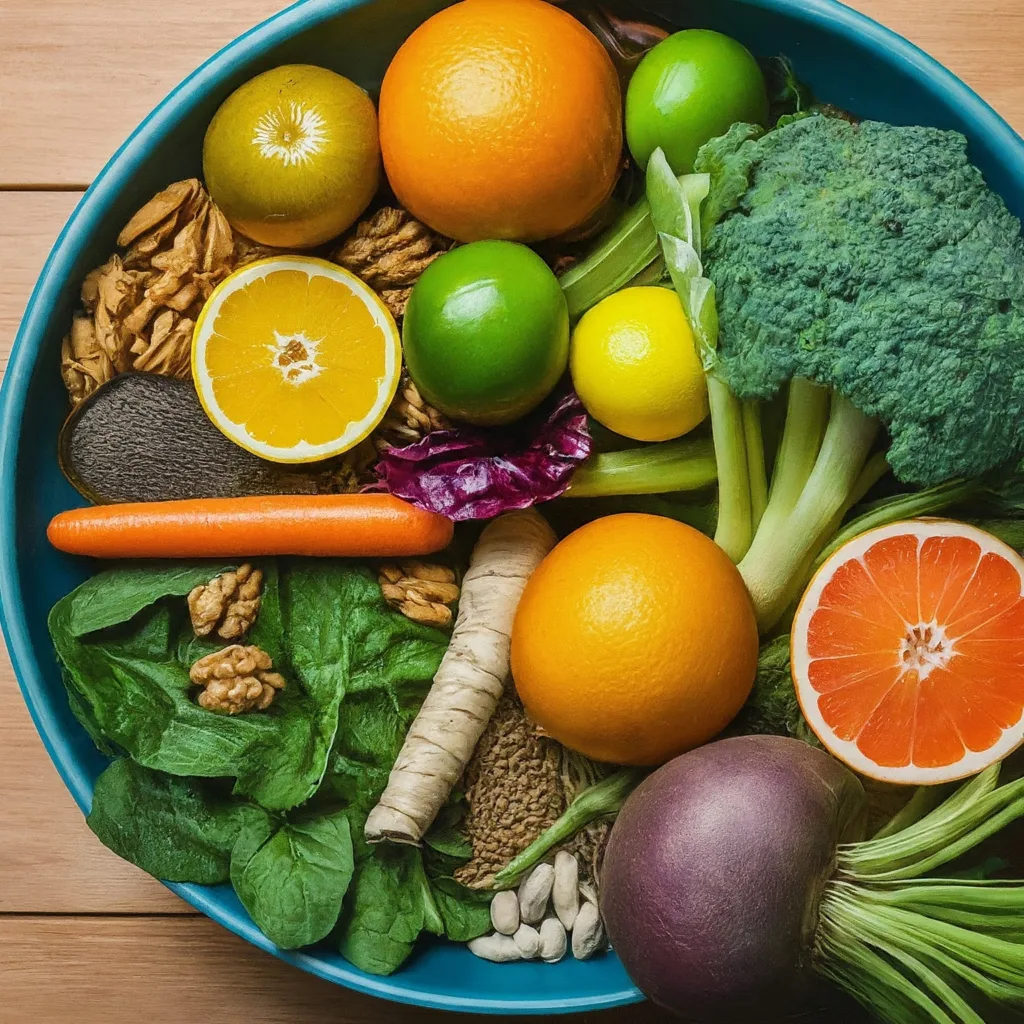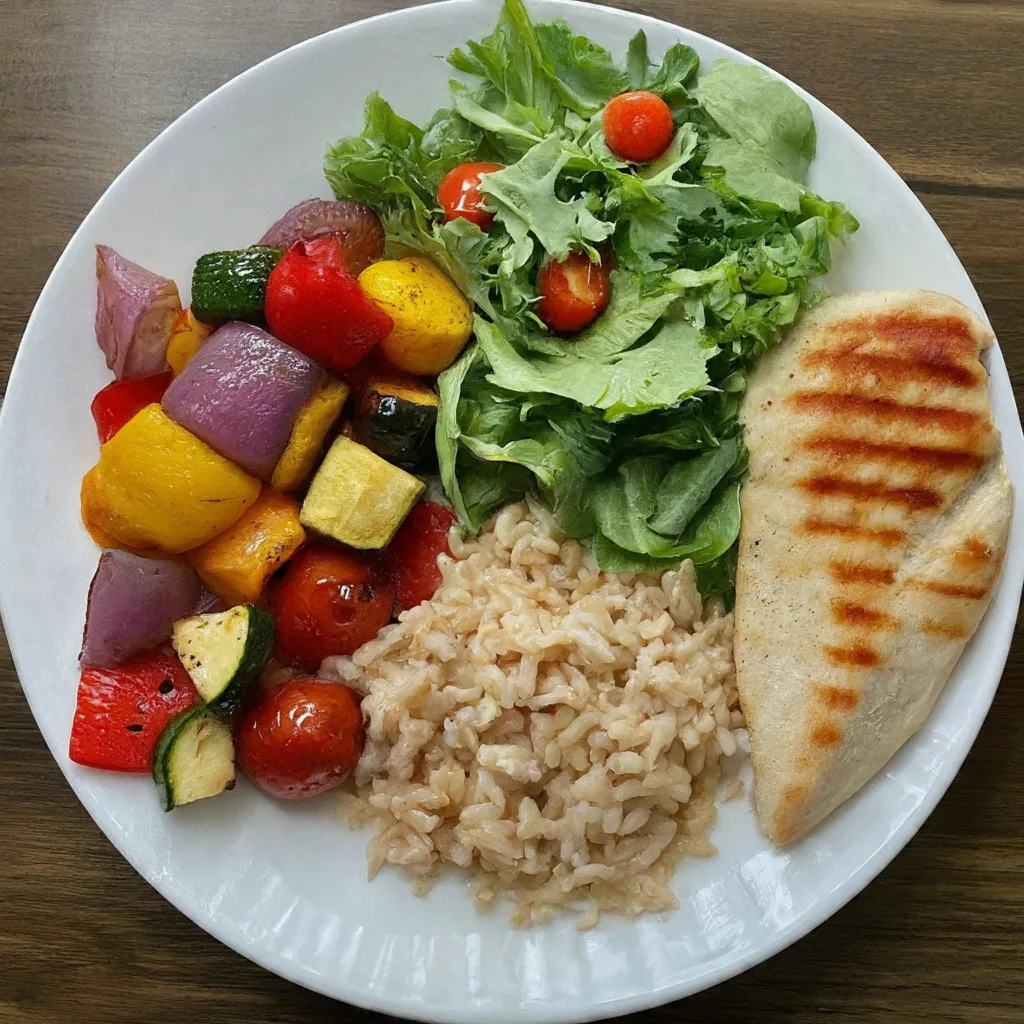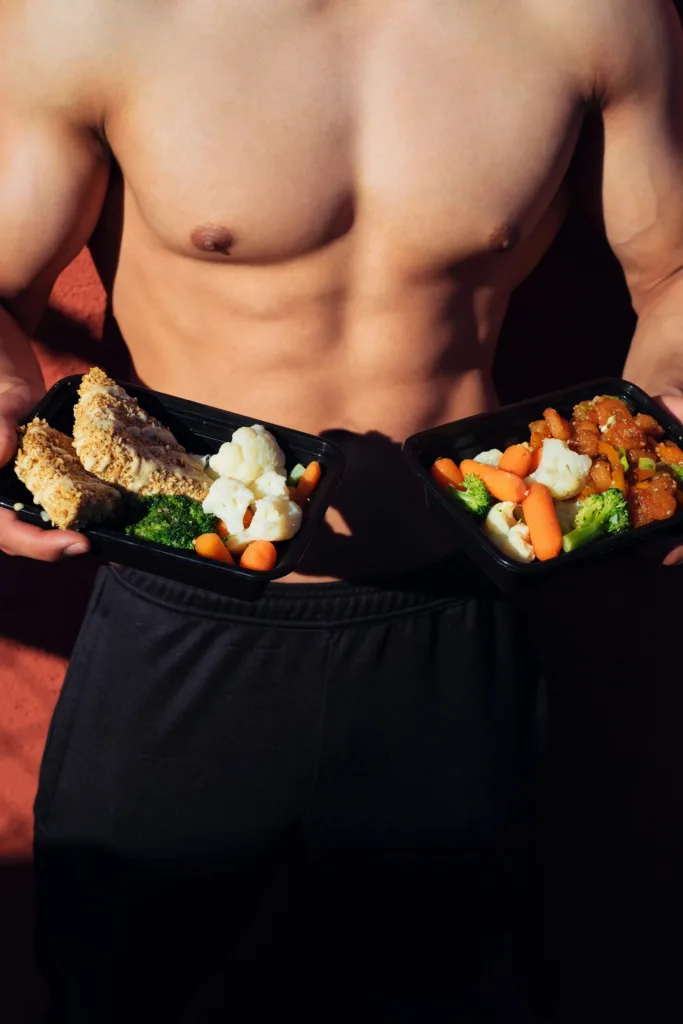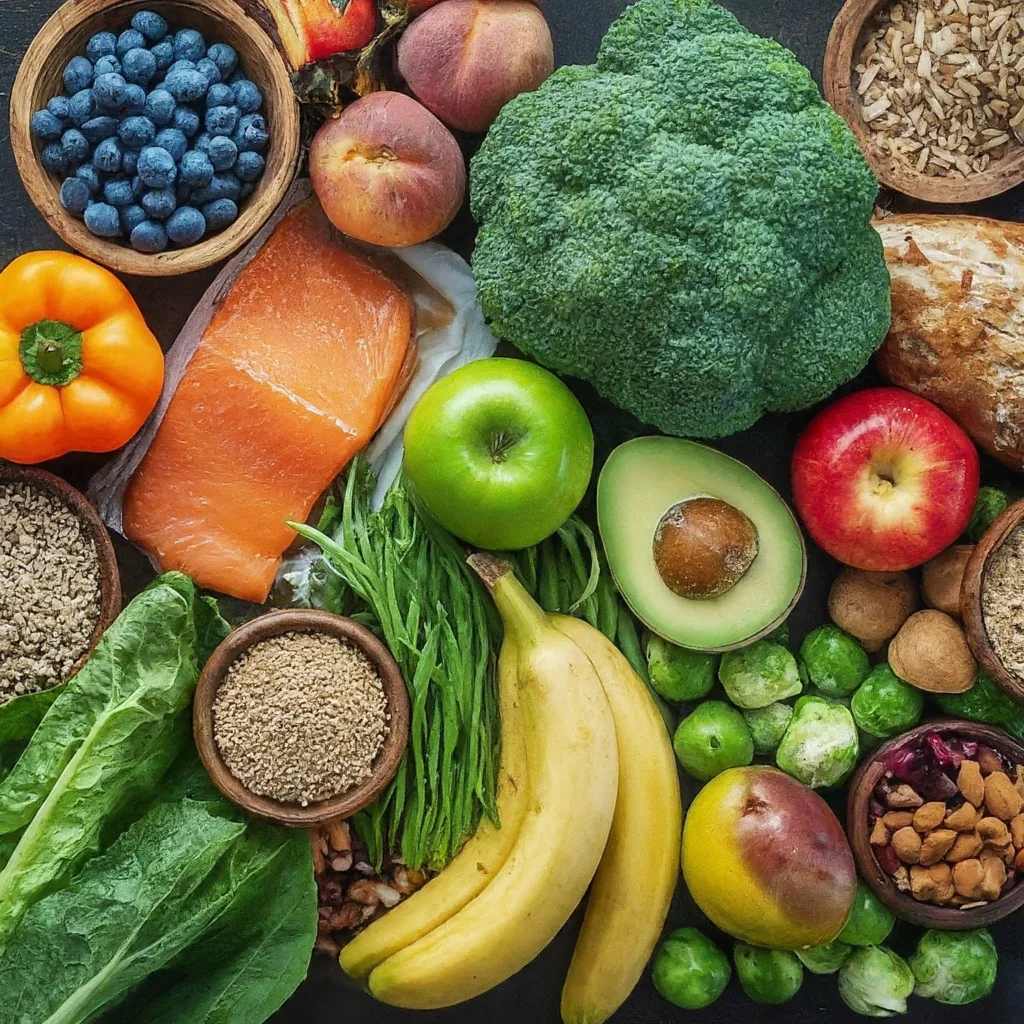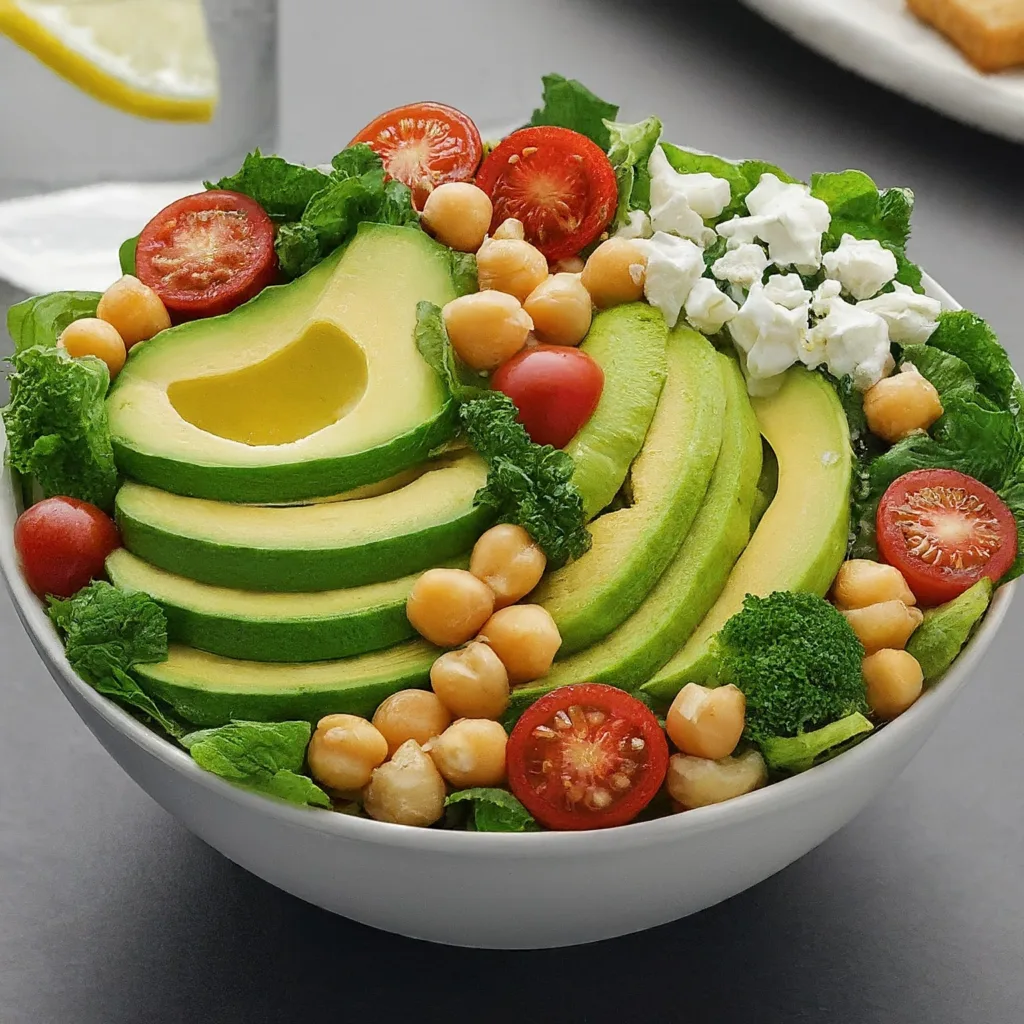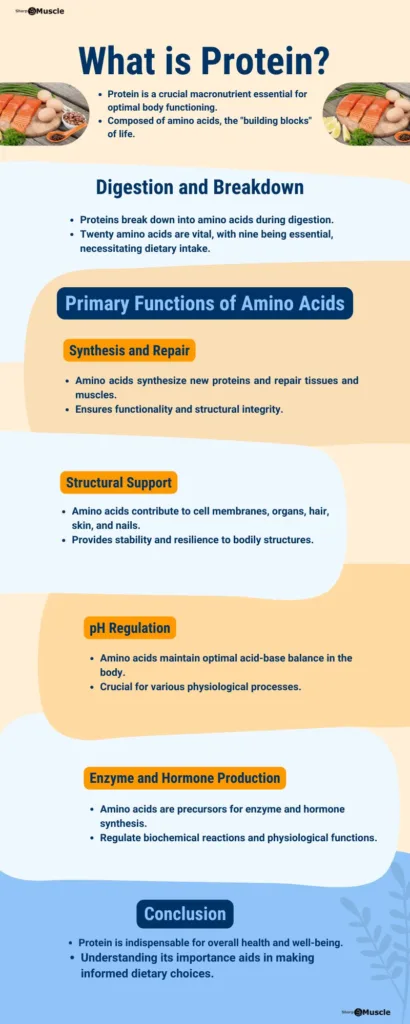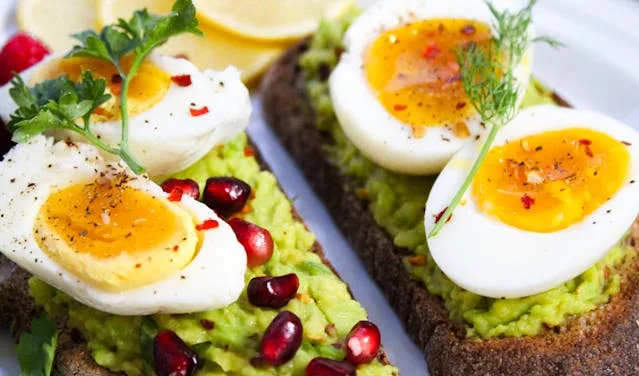An area of skin that extend outward from the hips, known as love handles. It is another name for the extra fat that sits on the sides of the waist and hangs over the top of the pants.
In addition to being a risk factor for many diseases, excess abdominal fat can make you feel bloated and discouraged.
Love handles, also known as muffin tops, can be a challenge to lose fat. To get rid of the muffin tops for good, you need to make changes in diet, exercise, and lifestyle.
Many people try to target this specific area with endless side crunches and other abdominal movements, targeting the oblique, muscular ones that drive the sides of the torso.
They are fat, and to burn fat you need a healthy diet and a rigorous cardiovascular program. The only way to reduce these love handles fat is to burn more fat for your body.
I suggest that eating more and more healthy food and following a well-rounded exercise program can help you burn more calories.
What causes love handles?
The underlying factors of love handling is fat retention. Fat can accumulate anywhere in the body, but there are some factors that increase the likelihood of maintaining fat in the hip, lower back and abdominal areas.
- Hormones, especially too much cortisol
- Age (accumulation of abdominal fat is especially common as you get older)
- Lack of physical activity
- Dietary fats, sugars and high calorie foods
- Sleep deprivation
- Unplanned or untreated conditions that slow down your metabolism (hypothyroidism – or underactive thyroid – for example, makes it difficult to burn excess calories)
Risk factors of love handles
Love handles are not dangerous, but they may indicate underlying risk factors for chronic diseases. Are included:
- Liver disease
- Type 2 diabetes (too much body fat can cause insulin resistance)
- Heart disease
- Hypertension (high blood pressure)
- High cholesterol
- Sleep apnea and other breathing problems
- The strokes
- Cancer, especially of colon and breast
- Osteoarthritis
Stopping the love handle can boost your overall health. If you dream about having a flat stomach, then this article may be just what you need.
How to fix it?
Fortunately, several strategies have been shown to be particularly effective for reducing your waist size. Here are science-supported methods that will help you reach the goal of reducing your “love handles” fat.
1. Good amount of sleep
People who sleep very little are more likely to gain weight and increase waist circumference than those who sleep normally.
The study has repeatedly shown sleeping less than five hours a night for adults and less than 10 hours for children is associated with increased risk of weight gain. 1 2
In women, shorter sleep duration is associated with an increased waist size compared to those who get a good night’s sleep. 3 2
2. Reduce stress
Try to add some stress-relieving activities to your routine, such as yoga or meditation. Stress triggers the production of cortisol, increasing appetite and storing abdominal fat.
Stress is associated with the development of many diseases, and is also a common cause that people go to eat or binge-eat, often without hunger in the first place. 4 5
This can be particularly harmful in women who already have a large waistline, as they produce more cortisol in response to stress, which further increases belly fat. 6
3. Drink water to increase total energy expenditure
Drinking water can increase your metabolic rate, make you feel full and help relieve constipation, all of which can help you achieve the goal of flatulence.
There are at least three ways in which water can help you achieve a flat stomach:
- It can help in weight loss by temporarily increasing your metabolic rate. In fact, drinking water can increase your total energy expenditure by 100 calories per day.
- Drinking water before meals can make you feel full, so you will eventually eat fewer calories.
- It can help relieve constipation and reduce flatulence.
Drink a big glass of water before 1 hour of each meal. This can help you achieve your goal.
4. Do not consume heavy alcohol
Heavy alcohol consumption can contribute to weight gain, especially around your love handles areas.
If you want to reduce “love handles” areas fat, then you should aim to reduce or quit alcoholic beverages.
Alcohol contains 7 calories for each gram, which partly explains why alcoholic beverages are full with liquid calories. Beer has the same calories as sugary drinks, while red wine has twice as much.
Although moderate alcohol drinking is unlikely to reduce weight, heavy alcohol intake is associated with weight gain, especially around your pregnancy.
5. Do not drink sugar-sweetened beverage
Aromatic sodas, fruit juices, and energy drinks are usually filled with sugar and liquid calories.
Your brain does not register liquid calories like it registers solid calories. Therefore, they top everything you eat and contribute to weight gain. 7
It is also very easy to drink large amounts at once, resulting in abundant amounts of empty calories.
These drinks are also usually filled with fructose, which is directly linked to increasing abdominal fat.
One study has shown that each daily serving of a sugar-sweetened beverage increases the risk of obesity in children by 60%. 8
6. Eat healthy diet to reduce love handles
Eating healthy is important when you are trying to lose fat in love handles area of the body. A healthy diet is not about strict boundaries, staying unreasonably thin, or depriving yourself of the foods you love. Rather, it is about feeling great, having more energy, improving your health and boosting your mood.
These simple guide can show you how to plan, enjoy and stick to a healthy diet:
Cut on sugar consumption
Adding added sugar is one of the best ways to cleanse your diet. The added sugar is found in cookies and foods such as candy, sports drinks and soda. The term does not apply to natural sugars found in healthy foods such as whole fruits.
In addition to being associated with a case of health issues such as heart disease, metabolic syndrome and diabetes, eating too much sugar can increase body fat content, especially in the abdominal area.
Sweeteners such as table sugar, high-fructose corn syrup (HFCS), honey, and agave nectar all contain a simple sugar called fructose.
Several studies have shown that fructose, especially sweetened beverages, causes an increase in abdominal fat. 9
In addition, most sugary foods are full of calories yet contain few nutrients. Reducing the amount of added sugar in your diet can help reduce body fat, including love handles.
Cut back on your calories
It is a well-known fact that you need to cut calories to lose weight. Eating a few calories over a long period of time can slow down your metabolic rate. Therefore, it is important not to restrict calories too much or for long.
Decrease in metabolic rate can persist even when you start behaving normally. This means that you may have a lower metabolic rate before you severely restrict your calorie intake.
A popular approach is to reduce your daily intake by 500–1,000 calories to expect to lose about 1-2 pounds (0.5–1 kg) of weight per week.
Eating too few calories can drastically decrease your metabolic rate, or increase the number of calories you consume on a daily basis.
In one study, a group of people who ate 1,100 calories per day slowed their metabolic rate more than double compared to those who consumed about 1500 calories per day for four consecutive days. 10
Limit carbs intake
Choosing complex carbohydrates that contain more fiber than refined carbohydrates is a great way to lose weight and get rid of “love handles” fat.
Unlike refined carbs that leave you feeling hungry, complex carbs make you feel satisfied throughout the day and can help you eat less.
For nutrient-dense complex carbs such as sweet potatoes, beans, oats and brown rice, refined carbohydrates such as white bread, pasta and white rice can help you shed belly fat.
Studies have shown that your diet includes fiber-rich carbohydrates, which can help you lose weight, which can help thin the love handles. 11
Limit your carbs. Limiting your carb intake has powerful health benefits, especially for weight loss.
More specifically, studies show that a low-carb diet targets fat that stays around your organs and expands your waistline. 12
Some studies also show that you can significantly improve your metabolic health and reduce your waistline by replacing refined carbs with unsafe, whole food carbs. 13
Protein intake
Protein is one of the most important nutrient to lose weight.
High-protein diets can increase your metabolic rate, reduce your hunger, and help you maintain muscle during weight loss. They are also associated with lower abdominal obesity rates.
Our body burns more calories digesting protein than fat or carbs. Therefore, a high-protein diet may account for an additional 80–100 burned calories per day.
In addition, studies have found that people who eat more protein have slimmer waistlines than those with less protein. 14
How much protein you need depends on many factors, such as your age, gender, and level of activity.
Generally, you should aim to get 20-30% calories from protein on a daily basis. This can easily be achieved by including a protein source in every meal.
Healthy fat intake
Filling healthy fats such as avocados, olive oil, nuts, seeds and fatty fish can make your waist slimmer.
Not only do healthy fats taste delicious, they help you feel full, allowing you to consume fewer calories throughout the day.
A study of more than 7,000 people found that when participants ate a high-fat Mediterranean diet with olive oil, they lost more weight and accumulated less abdominal fat than a low-fat diet. 15
It is recommended to eat fatty fish once or twice per week. Fatty fish is very healthy and rich in essential long chain omega-3 fatty acids. 16
Detox juice twice a week
It is best to drink the juice on an empty stomach, so I usually eat it in the morning, before I have something else for breakfast.
- Research suggests that drinking juice made from fresh fruits and vegetables can improve your antioxidant and folate levels, including important vitamins like C and E. 17
- A large study also suggests that drinking juice 3 times a week may be helpful in reducing the risk of Alzheimer’s disease, when compared to drinking juice less than once a week. 18
- A review of several studies has linked laxatives to lower risk of heart disease, as fruit and vegetable juice may help reduce homocysteine levels and markers of oxidative stress. (A high level of homocysteine in the body is a risk factor for heart disease.) 17
Love Handles Diet Plan for Men and Women
1. Workout day diet plan for women
| Ingredients | Quantities |
|---|---|
| BREAKFAST MEAL (Super oats meal) | |
| Whey protein or ProteinX | 1 scoop |
| Oats | 1/2 cup |
| Banana | 1/3 |
| Flaxseeds or Chia seeds | 1 spoon |
| Cinnamon | 2g |
| Revital (for women) | 1 |
| MID-MORNING MEAL | |
| Milk (non-fat) | 1 cup |
| Apple oor Pear or Orange | 1 |
| LUNCH (Paneer Bean Salad) | |
| Paneer | 50g |
| Kidney Beans | 1/2 cup |
| Cucumber | 1/2 |
| Tomato | 3 spoon |
| Cabbage or Green leaves or Lettuces or Brocoli | 1 cup |
| Carrot | 1 large |
| Walnuts | 20g |
| Avocado (optional) | 1 |
| Vinegar | 1 spoon |
| MID-AFTERNOON MEAL | |
| Whey protein or ProteinX | 1 scoop |
| Banana | 1 |
| Peanut | 1 spoon |
| Peanut butter | 1 spoon |
| DINNER (rice veggies boil) | |
| Soya chunk | 30g |
| Brown rice | 1/2 cup |
| Cauliflower | 1/2 cup |
| Chic peas (cooked) | 1/2 cup |
| Green bell pepper | 1/2 |
| Tomato | 2 spoon |
| Onion | 2 spoon |
| Coconut oil | 1 tbs |
| Salt + pepper + garlic powder | – |
| Ketchup | 1 spoon |
| Lemon | 1/2 |
| Fish oil or Flaxseed oil | 1g |
| 1 hr BEFORE BED | |
| Almonds (crushed) | 12 |
| Milk (non-fat) | 240ml |
| Cinnamon | 1 pinch |
| Cardamom (green) | 1 |
| Ingredients | Quantities |
|---|---|
| PRE-WORKOUT MEAL | |
| Amino energy (supplement) | 1 scoop |
| Water (cold) | 200ml |
| OR | |
| Coffee | 1/2 tbs |
| Water (hot) | 240ml |
| POST-WORKOUT MEAL | |
| Whey protein (supplement) | 1/2 scoop |
| Water | 240ml |
| OR | |
| Milk (non-fat) | 240ml |
Micro-Breakdown: Calories = 1490; Protein = 140g; Carbs = 120g; Fat = 50g
2. No-workout day diet plan for women
| Ingredients | Quantities |
|---|---|
| BREAKFAST MEAL | |
| Oats | 1/2 cup |
| Banana | 1/2 |
| Cinnamon | 2g |
| Whey protein or ProteinX | 1 scoop |
| Revital (for women) | 1 |
| MID-MORNING MEAL | |
| Milk (non-fat) | 240ml |
| Whole wheat bread | 1 slice |
| Peanut butter | 1 spoon |
| LUNCH | |
| Roti | 1 |
| Paneer | 50g |
| Cucumber | 1/2 |
| MID-AFTERNOON MEAL | |
| Milk (non-fat) | 1 cup |
| Roasted channe | 1 cup |
| DINNER | |
| Brow rice | 1/2 cup |
| Black lentils (cooked) | 1/2 cup |
| Yogurt (low-fat) | 1 cup |
| Fish oil or Flaxseed oil (supplement) | 1g |
| 1 hr BEFORE BED MEAL | |
| Non-fat milk | 240ml |
| Crushed Almonds | 12 |
| Cardamom (green) | 1 |
| Cinnamon | 1 pinch |
Micro-Breakdown: Calories = 1530; Protein = 101g; Carbs = 205g; Fat = 34g
3. Workout day diet plan for men
| Ingredients | Quantities |
|---|---|
| BREAKFAST MEAL | |
| Oats | 1/2 cup |
| Whey protein | 1 scoop |
| Banana | 1/2 |
| Chia-seeds or Flaxseed | 1 spoon |
| Cinnamon | 2g |
| Multivitamin (supplement) | 1 |
| MID-MORNING MEAL | |
| Casein or Whey protein | 1 scoop |
| Apple or Pear or orange | 1 |
| LUNCH | |
| Paneer | 50g |
| Kidney Beans | 1/2 cup |
| Avocado or Broccoli (optional) | 1/2 |
| Lettuce or Cabbage or Green leaves | 1 cup |
| Cucumber | 1 |
| Tomato | 3 spoon |
| Carrot | 1 large |
| Walnuts | 20g |
| Vinegar | 1 spoon |
| CLA (supplement) | 1g |
| MID-AFTERNOON | |
| Whey protein | 1 scoop |
| or ProteinX | 2 scoop |
| Peanut butter | 1 spoon |
| Peanut | 1 spoon |
| Banana | 1 |
| DINNER | |
| Soy chunks | 50g |
| Chickpeas | 1/2 cup |
| Brown rice | 1/2 cup |
| Cauliflower | 1/2 cup |
| Green bell pepper | 1/2 |
| Onion | 3 spoon |
| Tomato | 3 spoon |
| Salt, pepper, and garlic powder | – |
| Ketchup | 1 spoon |
| Lemon | 1/2 |
| Fish oil or Flaxseed oil (supplements) | 1g |
| 1 hr BEFORE BED MEAL | |
| Casein or Whey protein | 2/3 scoop |
| Milk (non-fat or Almond) | 240ml |
| Flaxseeds (ground) | 2 spoon |
| Cinnamon | 1 pinch |
| CLA (supplement) | 1g |
| Ingredients | Quantities |
|---|---|
| PRE-WORKOUT MEAL | |
| Amino energy | 1 scoop |
| Water (cold) | 200ml |
| OR | |
| Coffee | 1/2 tbs |
| Water (hot) | 240ml |
| Milk | 1 spoon |
| DURING WORKOUT | |
| Xtend | 1 scoop |
| Water | 750ml |
| POST-WORKOUT | |
| Whey protein | 1-2 scoop |
| Gatorade | 200ml |
| or Water | 240ml |
| OR | |
| ProteinX (sugar free) | 2 spoon |
| Milk (non-fat) | 240ml |
Micro-Breakdown: Calories = 1950; Protein = 203g; Carbs = 127g; Fat = 70g
4. No-workout day diet plan men
| Ingredients | Quantities |
|---|---|
| BREAKFAST MEAL | |
| Whey protein | 1 scoop |
| or ProteinX | 2 scoop |
| Oats | 1 cup |
| Banana | 1/2 |
| Cinnamon | 2g |
| Multivitamin (supplement) | 1 |
| MID-MORNING MEAL | |
| Milk (non-fat) | 240ml |
| Whole wheat bread | 3 slice |
| Peanut butter | 1 spoon |
| LUNCH | |
| Roti | 2 |
| Paneer | 80g |
| Cucumber | 1/2 |
| CLA (supplement) | 1g |
| MID-AFTERNOON MEAL | |
| Whey protein | 1/2 scoop |
| Oats cookies (Britannia) | 3 |
| Dry Roasted channe | 1 cup |
| Milk (non-fat) | 200 ml |
| DINNER | |
| Yogurt (low-fat) | 1 cup |
| Brown rice | 1 cup |
| Black lentil (cooked) | 1/2 cup |
| Fish oil or Flaxseed oil | 1g |
| 1 hr BEFORE BED | |
| Casein or Whey protein | 2/3 scoop |
| Milk (non-fat) | 240ml |
| Whole wheat bread | 1 slice |
| Peanut butter | 1 spoon |
| CLA (supplement) | 1g |
Micro-Breakdown: Calories = 2177; Protein = 143g; Carbs = 309g; Fat = 41g
7. Love Handles Workout Routine
Fat reduction cannot be done only with spot exercise. While strengthening and resistance activities can help with muscle tone and flexibility, they do not shrink fat cells.
For optimal results, try to combine cardiovascular exercise with weight training and targeted movements. If you are trying to lose weight and body fat overall, you may need five hours of moderate exercise per week.
Even if you can’t fit in a full-on workout every single day, you’ll just reap the benefits of being more active. Here are just a home workout routine that target the back, abdomen and hip areas:
| Days | Exercises |
|---|---|
| Monday | Abs |
| Tuesday | Upper body |
| Wednesday | Lower body |
| Thursday | Abs |
| Friday | Upper body |
| Saturday | Lower body |
| Sunday | No-workout |
Abs routine
| Exercises | Reps |
|---|---|
| Cat cow stretch | 10 reps |
| Sit up | 10 reps |
| Knee raise | 10 reps |
| Oblique crunch | 10 reps |
| Plank side hip dip | 10 each side |
| Plank side bridge | 10 reps each side |
| Spiderman plank | 10 each side |
7 exercises back to back without any rest. Perform 5 rounds and do 1 minutes rest between rounds.
Upper body
| Exercises | Reps |
|---|---|
| Wide push-up | 10 reps |
| Stretch walk | 10 reps |
| Close push-up | 10 reps |
| Shoulder push-up | 10 reps |
| Hindu stretch | 10 reps |
Back to back 5 exercises, no rest between 5 exercises. 5 to 8 rounds, 1 minute rest between rounds.
Lower body
| Exercises | Reps |
|---|---|
| Wide-jump squats | 10 reps |
| Back lunge | 10 reps each side |
| Split lunge | 10 reps each side |
| Mountain climber | 10 reps each side |
| Diagonal calf raises | 10 reps |
5-8 rounds, 1 minute rest between rounds. There are no rest between exercises, 5 exercises back to back.
- Cappuccio FP, Taggart FM, Kandala NB, Currie A, Peile E, Stranges S, Miller MA. “Meta-analysis of short sleep duration and obesity in children and adults.” Sleep. 2008 May;31(5):619-26. doi: 10.1093/sleep/31.5.619. PMID: 18517032; PMCID: PMC2398753.[↩]
- Theorell-Haglöw J, Berne C, Janson C, Sahlin C, Lindberg E. “Associations between short sleep duration and central obesity in women.” Sleep. 2010 May;33(5):593-8. PMID: 20469801; PMCID: PMC2864874. Available from: https://pubmed.ncbi.nlm.nih.gov/20469801.[↩][↩]
- Theorell-Haglöw J, Berglund L, Janson C, Lindberg E. “Sleep duration and central obesity in women – differences between short sleepers and long sleepers.” Sleep Med. 2012 Sep;13(8):1079-85. doi: 10.1016/j.sleep.2012.06.013. Epub 2012 Jul 26. PMID: 22841029.[↩]
- van Strien T, Herman CP, Verheijden MW. “Eating style, overeating, and overweight in a representative Dutch sample. Does external eating play a role?” Appetite. 2009 Apr;52(2):380-7. doi: 10.1016/j.appet.2008.11.010. Epub 2008 Nov 27. PMID: 19100301.[↩]
- van Strien T, Ouwens MA. “Effects of distress, alexithymia and impulsivity on eating.” Eat Behav. 2007 Apr;8(2):251-7. doi: 10.1016/j.eatbeh.2006.06.004. Epub 2006 Jun 27. PMID: 17336795.[↩]
- Moyer AE, Rodin J, Grilo CM, Cummings N, Larson LM, Rebuffé-Scrive M. “Stress-induced cortisol response and fat distribution in women.” Obes Res. 1994 May;2(3):255-62. doi: 10.1002/j.1550-8528.1994.tb00055.x. PMID: 16353426.[↩]
- Malik VS, Schulze MB, Hu FB. “Intake of sugar-sweetened beverages and weight gain: a systematic review.” Am J Clin Nutr. 2006 Aug;84(2):274-88. doi: 10.1093/ajcn/84.1.274. PMID: 16895873; PMCID: PMC3210834.[↩]
- Ludwig DS, Peterson KE, Gortmaker SL. “Relation between consumption of sugar-sweetened drinks and childhood obesity: a prospective, observational analysis.” Lancet. 2001 Feb 17;357(9255):505-8. doi: 10.1016/S0140-6736(00)04041-1. PMID: 11229668.[↩]
- Ma J, Sloan M, Fox CS, Hoffmann U, Smith CE, Saltzman E, Rogers GT, Jacques PF, McKeown NM. “Sugar-sweetened beverage consumption is associated with abdominal fat partitioning in healthy adults.” J Nutr. 2014 Aug;144(8):1283-90. doi: 10.3945/jn.113.188599. Epub 2014 Jun 18. PMID: 24944282; PMCID: PMC4093984.[↩]
- Kouda K, Nakamura H, Kohno H, Okuda T, Higashine Y, Hisamori K, Ishihara H, Tokunaga R, Sonoda Y. “Metabolic response to short-term 4-day energy restriction in a controlled study.” Environ Health Prev Med. 2006 Mar;11(2):89-92. doi: 10.1007/BF02898148. PMID: 21432368; PMCID: PMC2723638.[↩]
- Kim SJ, de Souza RJ, Choo VL, Ha V, Cozma AI, Chiavaroli L, Mirrahimi A, Blanco Mejia S, Di Buono M, Bernstein AM, Leiter LA, Kris-Etherton PM, Vuksan V, Beyene J, Kendall CW, Jenkins DJ, Sievenpiper JL. “Effects of dietary pulse consumption on body weight: a systematic review and meta-analysis of randomized controlled trials.” Am J Clin Nutr. 2016 May;103(5):1213-23. doi: 10.3945/ajcn.115.124677. Epub 2016 Mar 30. PMID: 27030531.[↩]
- Volek J, Sharman M, Gómez A, Judelson D, Rubin M, Watson G, Sokmen B, Silvestre R, French D, Kraemer W. “Comparison of energy-restricted very low-carbohydrate and low-fat diets on weight loss and body composition in overweight men and women.” Nutr Metab (Lond). 2004 Nov 8;1(1):13. doi: 10.1186/1743-7075-1-13. PMID: 15533250; PMCID: PMC538279.[↩]
- López-Alarcón M, Perichart-Perera O, Flores-Huerta S, Inda-Icaza P, Rodríguez-Cruz M, Armenta-Álvarez A, Bram-Falcón MT, Mayorga-Ochoa M. “Excessive refined carbohydrates and scarce micronutrients intakes increase inflammatory mediators and insulin resistance in prepubertal and pubertal obese children independently of obesity.” Mediators Inflamm. 2014;2014:849031. doi: 10.1155/2014/849031. Epub 2014 Nov 16. PMID: 25477716; PMCID: PMC4248360.[↩]
- Loenneke JP, Wilson JM, Manninen AH, Wray ME, Barnes JT, Pujol TJ. “Quality protein intake is inversely related with abdominal fat.” Nutr Metab (Lond). 2012 Jan 27;9(1):5. doi: 10.1186/1743-7075-9-5. PMID: 22284338; PMCID: PMC3284412.[↩]
- Estruch R, Martínez-González MA, Corella D, Salas-Salvadó J, Fitó M, Chiva-Blanch G, Fiol M, Gómez-Gracia E, Arós F, Lapetra J, Serra-Majem L, Pintó X, Buil-Cosiales P, Sorlí JV, Muñoz MA, Basora-Gallisá J, Lamuela-Raventós RM, Serra-Mir M, Ros E; PREDIMED Study Investigators. “Effect of a high-fat Mediterranean diet on bodyweight and waist circumference: a prespecified secondary outcomes analysis of the PREDIMED randomised controlled trial.” Lancet Diabetes Endocrinol. 2019 May;7(5):e6-e17. doi: 10.1016/S2213-8587(19)30074-9. PMID: 31003626.[↩]
- Zivkovic AM, Telis N, German JB, Hammock BD. “Dietary omega-3 fatty acids aid in the modulation of inflammation and metabolic health.” Calif Agric (Berkeley). 2011 Jul;65(3):106-111. doi: 10.3733/ca.v065n03p106. PMID: 24860193; PMCID: PMC4030645.[↩]
- Esfahani A, Wong JM, Truan J, Villa CR, Mirrahimi A, Srichaikul K, Kendall CW. “Health effects of mixed fruit and vegetable concentrates: a systematic review of the clinical interventions.” J Am Coll Nutr. 2011 Oct;30(5):285-94. doi: 10.1080/07315724.2011.10719971. PMID: 22081614.[↩][↩]
- Dai Q, Borenstein AR, Wu Y, Jackson JC, Larson EB. “Fruit and vegetable juices and Alzheimer’s disease: the Kame Project.” Am J Med. 2006 Sep;119(9):751-9. doi: 10.1016/j.amjmed.2006.03.045. PMID: 16945610; PMCID: PMC2266591.[↩]


